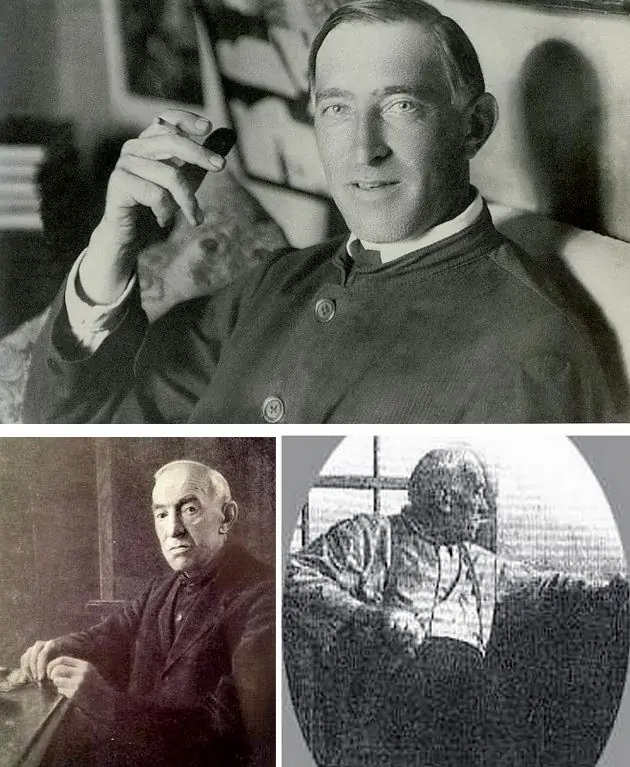- Author Antonio Harrison [email protected].
- Public 2024-01-09 15:32.
- Last modified 2025-01-22 21:44.
Nikolai Petrovich Krymov - landscape painter, set designer, teacher, art theorist. Born and died in Moscow. (May 3, 1884 - May 6, 1958).
During his studies at the art school, due to his poverty, he used the remains of paint after the works of other students. After decades of fruitful work, he received the title of Honored Art Worker, and then People's Artist of the RSFSR. He was a member of the USSR Academy of Arts. On the occasion of his 70th birthday, Nikolai Petrovich Krymov was awarded the Order of the Red Banner of Labor for his great services in the field of art.
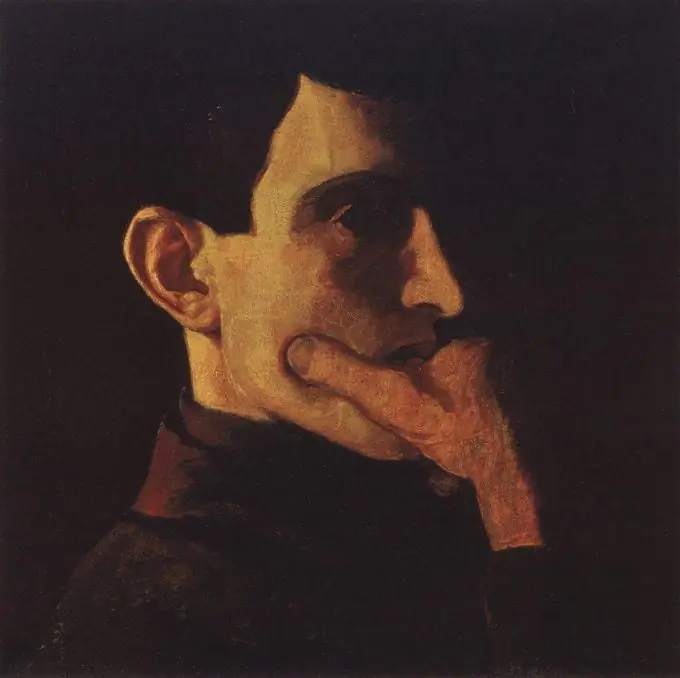
The beginning of creativity
Krymov is called the classic of Soviet art, the successor of the genre of realistic landscape and the successor of the outstanding Russian painters V. Polenov, I. Levitan, K. Korovin, V. Serov. Valentin Serov and Konstantin Korovin, moreover, were one of his teachers. The artist Korovin called the name of Krymov among the best students of the School of Painting, Sculpture and Architecture, where he taught Konstantin Alekseevich since 1901.
However, the first drawing lessons were given to Nikolai by his own father - artist Krymov Pyotr Alekseevich. Peter Alekseevich and his wife Maria Yegorovna were the parents of 12 children. A large creative and friendly family lived in a cramped house near the famous Moscow Patriarch's Ponds. Two sons followed their father's path - Vasily and Nikolai also became artists.
Nikolai first graduated from a real school. Then he began to prepare for admission to the Moscow School of Painting, Sculpture and Architecture (abbreviated as MUZHVZ), which his father graduated from. Pyotr Alekseevich was thoroughly preparing his son and Nikolai literally broke through to school in 1904, having withstood a huge competition. In tsarist Russia, this educational institution was one of the leading in the artistic sphere of the country. From 1904 to 1907, Nikolai received an architectural education, and then moved to the class of landscape painting. He finished his studies in 1911.
First successes and stages of development
Already in 1906, his painting "Roofs in the Snow" was so good that it was bought by Apollinariy Mikhailovich Vasnetsov, a school teacher. A year later, at the suggestion of Valentin Serov, who was then a member of the Board of Trustees of the Tretyakov Gallery, the work of the talented student entered the museum's collection. By the time he graduated from the Moscow School of Painting, Sculpture and Architecture in 1911, Nikolai Krymov was already a famous painter.
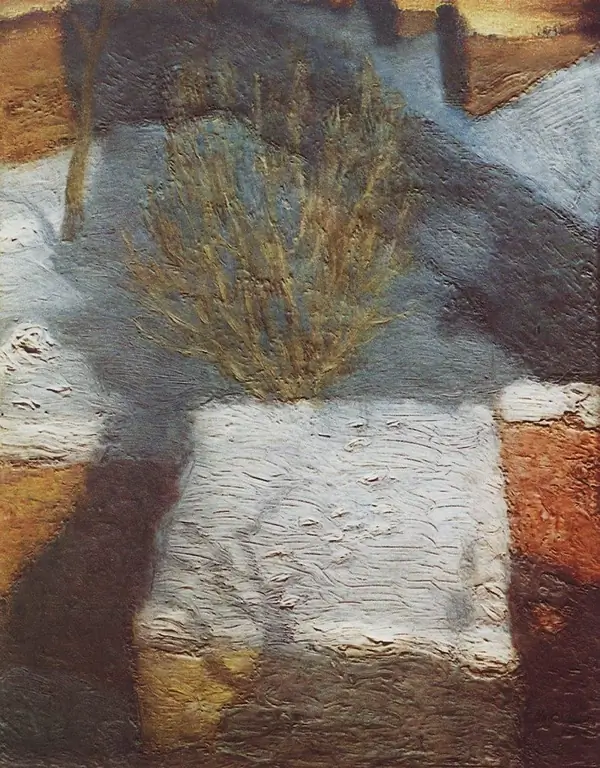
The work of the outstanding landscape painter is conventionally divided into the following intervals:

A noticeable trace in his work belongs to the "Zvenigorod period". Every summer from 1920 to 1927 Krymov went to Zvenigorod near Moscow. The outskirts of the city were associated with Isaac Levitan, whom Nikolai Petrovich considered his most beloved artist and even teacher, although he did not study directly with him. Krymov enthusiastically wrote here nature and paintings dedicated to the theme of the Russian countryside.
Nikolay Krymov's exhibitions
Nikolai Petrovich Krymov demonstrated his work at various exhibitions of various art associations of the early 1900s, such as "Blue Rose", "Makovets", "Wreath", "Union of Russian Artists".
The premiere of Krymov's individual exhibitions took place not just anywhere, but in the Tretyakov Gallery in 1922. Several dozen collectors provided many paintings for the exhibition from their collections. The works of the recognized master were actively dispersed among the collectors of painting during his lifetime. In 1954 his next successful solo exhibition took place. This time at the USSR Academy of Arts.
After the death of Krymov, exhibitions of his creations were held: in 1967 at the Academy of Arts of the USSR, in 1984 at the Central House of Artists. In October 2009, on the occasion of the 125th anniversary of the painter, an exhibition of his works from private collections was held in the Moscow gallery "Our Artists", and in July 2014 in the Krasnodar Regional Art Museum named after F. A. Kovalenko, dedicated to the 130th anniversary of Nikolai Krymov.
The versatile activities of Nikolai Krymov
Nikolai Krymov's activities were not limited to landscape painting. He created theatrical costumes and decorated performances. He even happened to work at the Moscow City Council in the Commission for the Protection of Monuments of Art and Antiquity. Nikolai Petrovich also had the talent of a teacher: for about 10 years, since 1919, he was a teacher at the Prechistensky Institute, Vkhutemas (Higher Artistic and Technical Workshops), the Moscow Regional Art School in memory of the 1905 uprising.

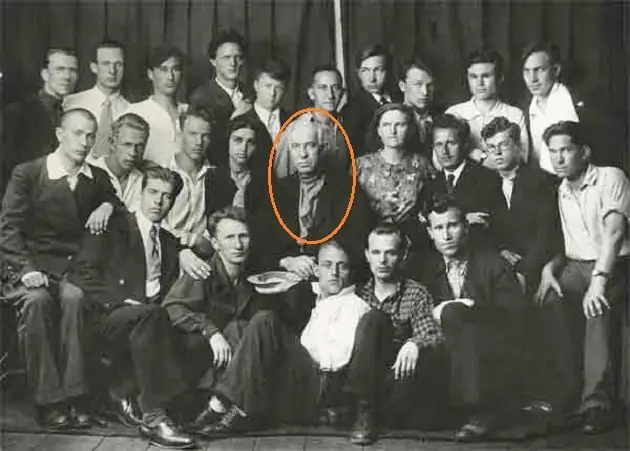
Nikolay Krymov's "general tone" theory
As an art theorist, Krymov developed the so-called "general tone theory". He believed that a correctly chosen basic tone plays an important role in a painting. He subjugates and fills the colors with light, creates the overall color of the picture. Color is an indicator of the illumination of an object. To determine the exact degree of illumination, Krymov suggested using the fire of a burning match or candle against the background of the depicted object. Nikolai Petrovich said that the same white house at noon and at sunset is tonal and two different spots in color.
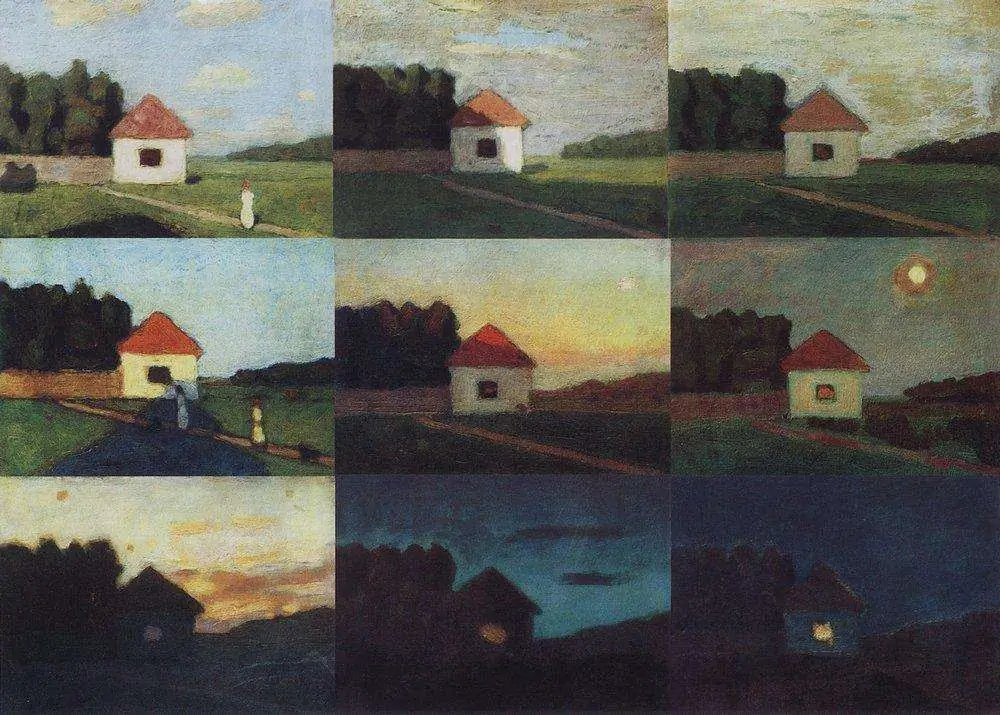
Health problems and creativity
From about 1935, Krymov began to show an illness that limited him in movements. Therefore, he painted Moscow views that opened from his apartment on the fourth floor of a house in the Prechistenka area. Nikolai Petrovich spent all the years of the Great Patriotic War in Moscow. His health deteriorated markedly, he could barely walk.
In the summer of 1945, Nikolai Krymov went to Tarusa, whom he loved and regularly came to work and rest since 1928. A workshop was equipped on the balcony and he painted cozy houses with gardens, streets leading to the Oka - what he could see from the height of his unsightly workshop.
Nikolai Petrovich Krymov passed away on May 6, 1958. Buried at the Novodevichy cemetery.
